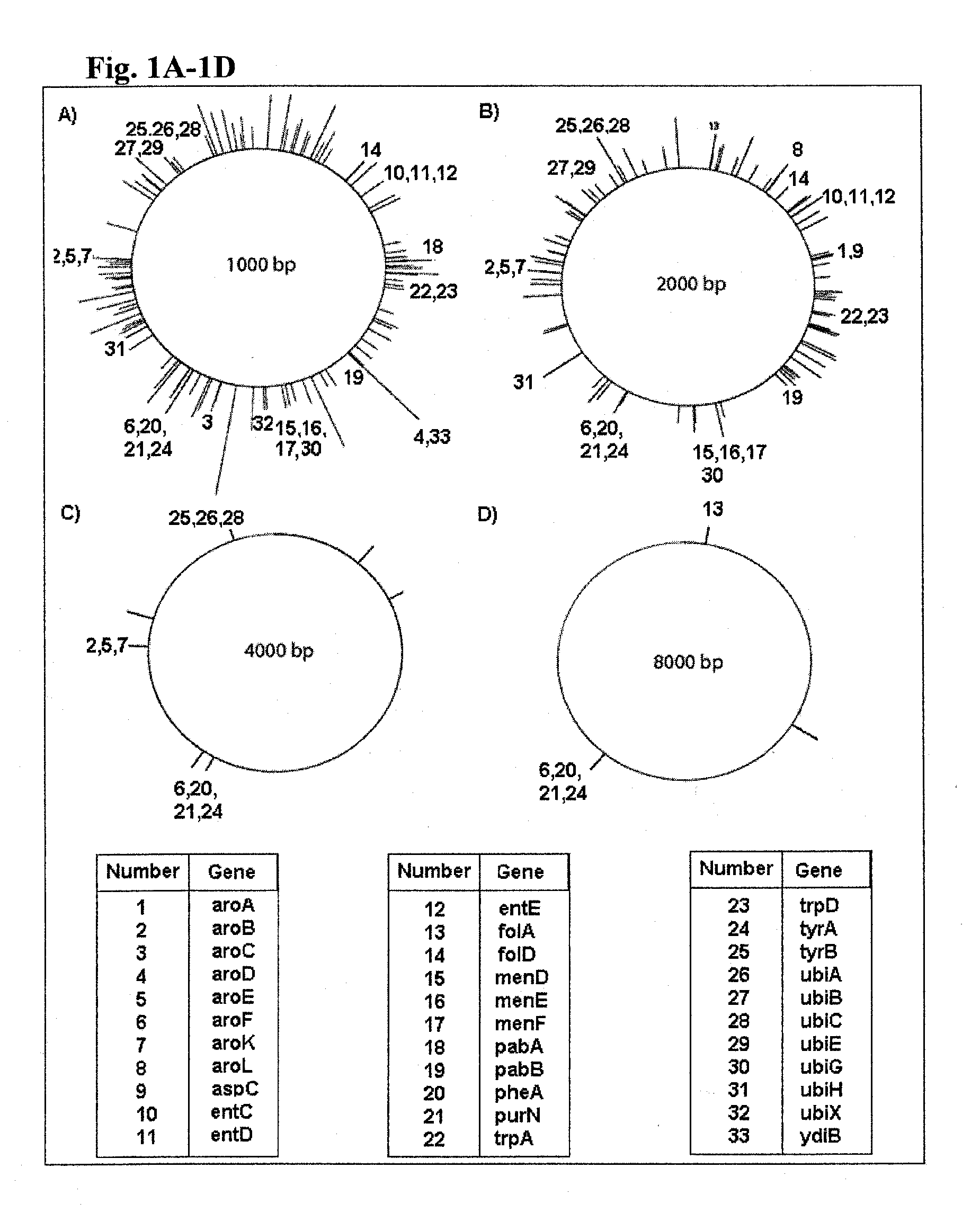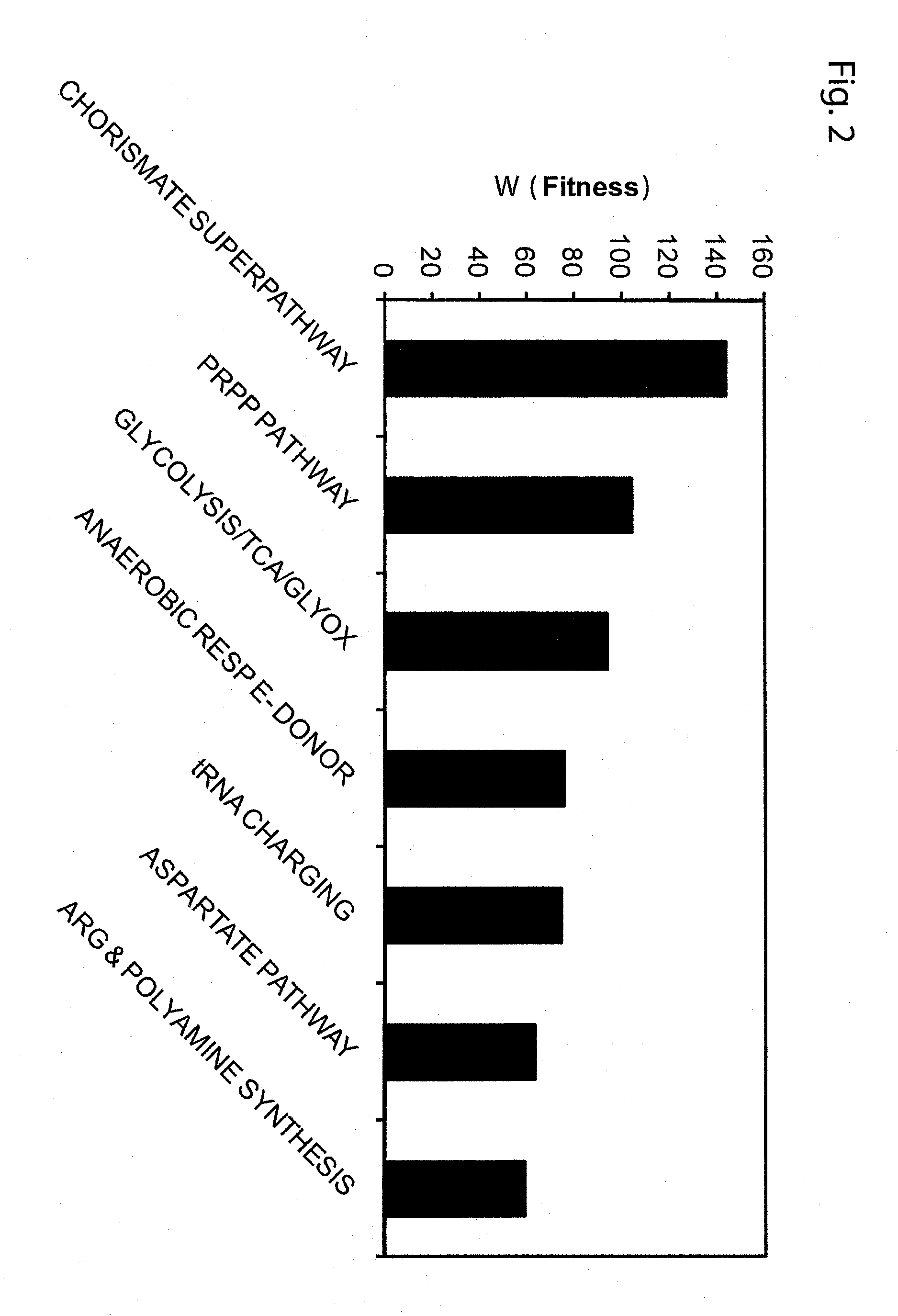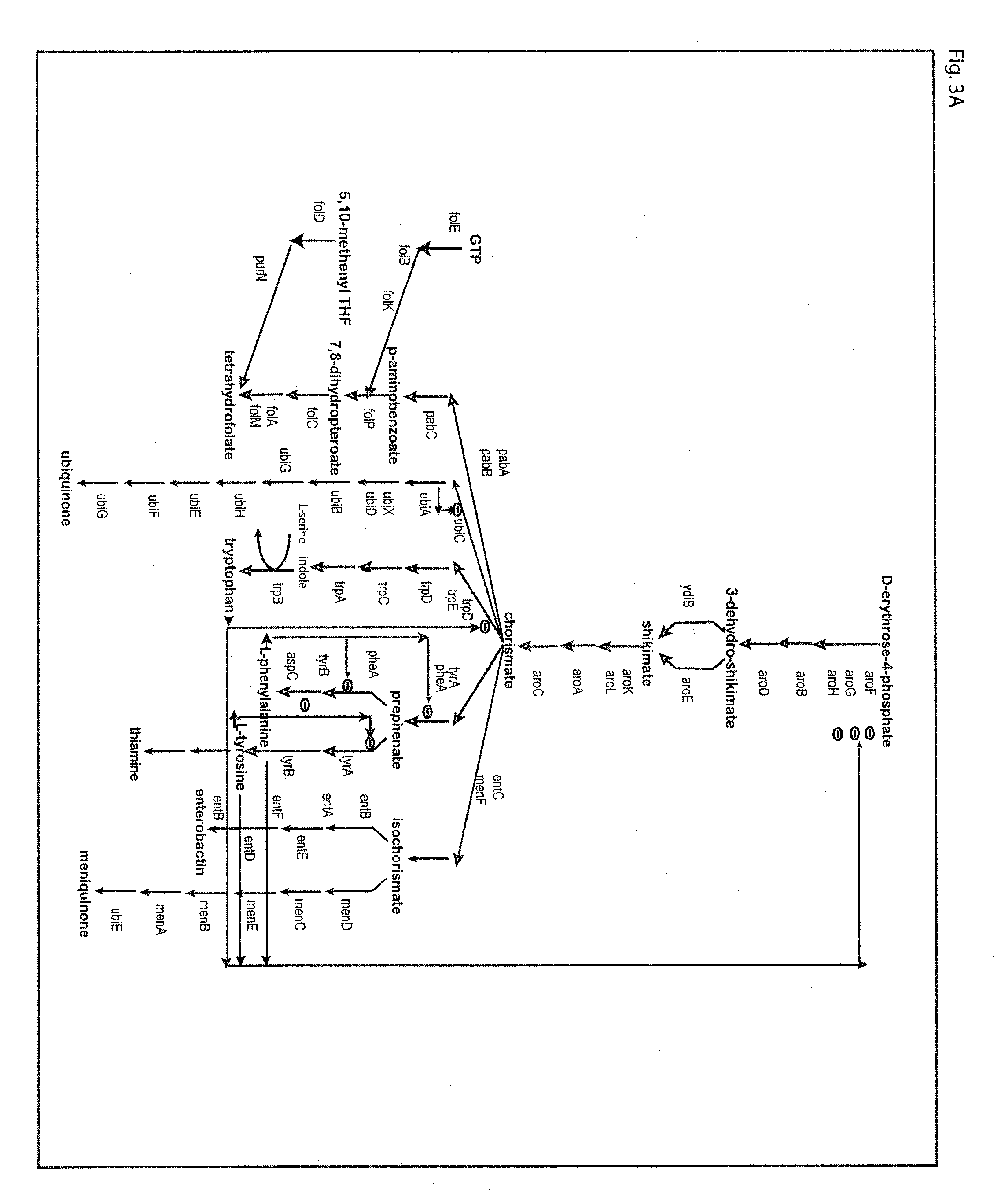Compositions and methods for enhancing tolerance for the production of organic chemicals produced by microorganisms
a technology of organic chemicals and microorganisms, applied in the direction of microorganisms, biochemical equipment and processes, organic active ingredients, etc., can solve the problems of dramatic rise in oil costs, and achieve the effect of low cost and rapid generation
- Summary
- Abstract
- Description
- Claims
- Application Information
AI Technical Summary
Benefits of technology
Problems solved by technology
Method used
Image
Examples
example 1
[0124]In one exemplary method, a selection was carried out over 8 serial transfer batches with a decreasing gradient of 3-HP over 60 hours. The initial population was comprised of five representative E. coli K12 genomic libraries that were transformed into MACH1-TR and cultured to mid exponential phase corresponding to microaerobic conditions OD600˜0.2). Batch transfer times were sustained as variable parameters that were adjusted as needed to avoid a nutrient limited selection environment. Samples were taken at the culmination of each batch in the selection, as described above, and were further analyzed with the SCALEs software in order to decompose the microarray signals into corresponding library clones and calculate relative enrichment of specific regions over time. In this way, genome-wide fitness (ln(Xi / Xi0)) was measured based on region specific enrichment patterns for the selection in the presence of an industrially relevant organic acid, 3-HP.
[0125]FIG. 1 represents plots o...
PUM
| Property | Measurement | Unit |
|---|---|---|
| diameter | aaaaa | aaaaa |
| optical density | aaaaa | aaaaa |
| total volume | aaaaa | aaaaa |
Abstract
Description
Claims
Application Information
 Login to View More
Login to View More - R&D
- Intellectual Property
- Life Sciences
- Materials
- Tech Scout
- Unparalleled Data Quality
- Higher Quality Content
- 60% Fewer Hallucinations
Browse by: Latest US Patents, China's latest patents, Technical Efficacy Thesaurus, Application Domain, Technology Topic, Popular Technical Reports.
© 2025 PatSnap. All rights reserved.Legal|Privacy policy|Modern Slavery Act Transparency Statement|Sitemap|About US| Contact US: help@patsnap.com



